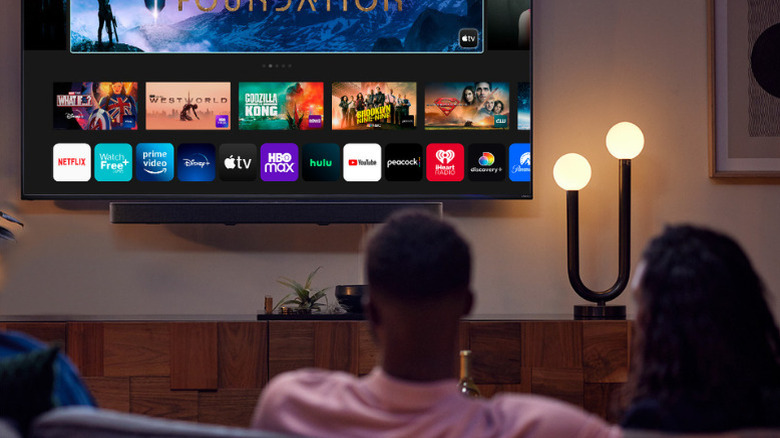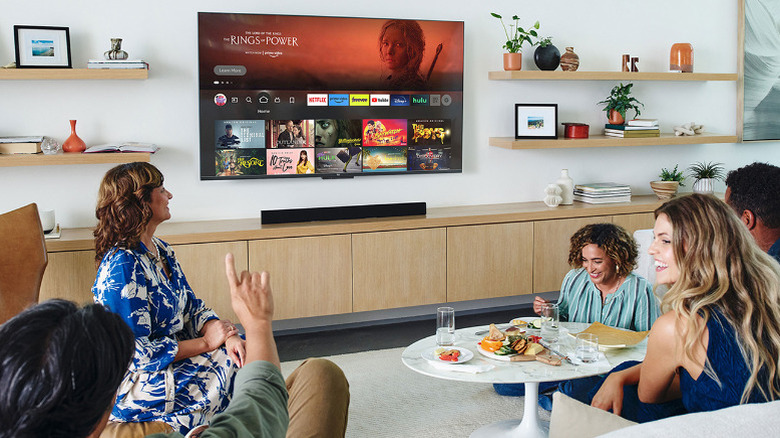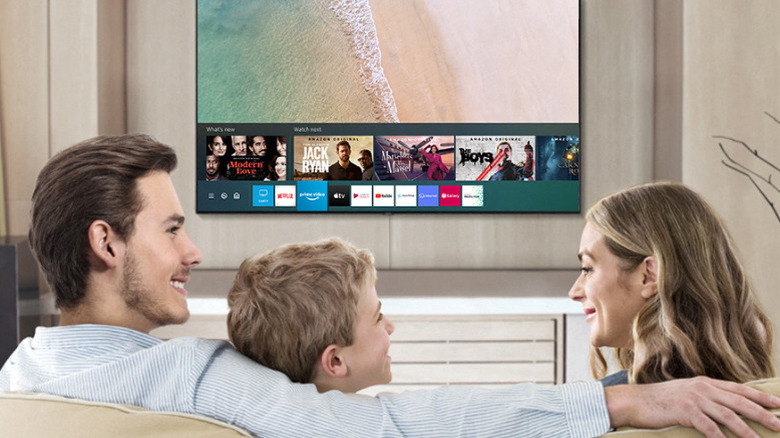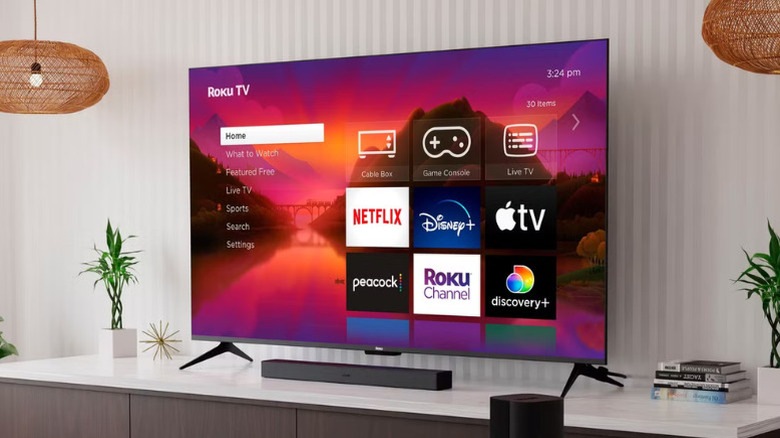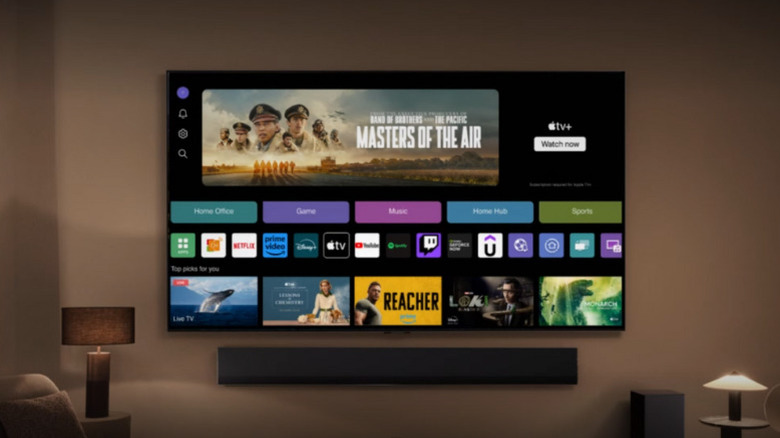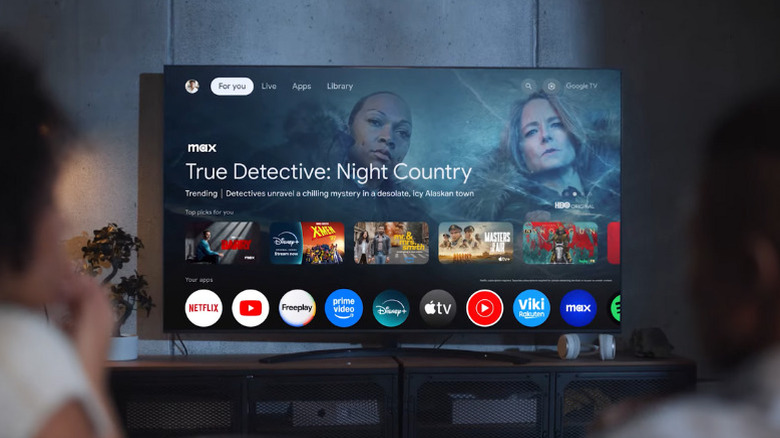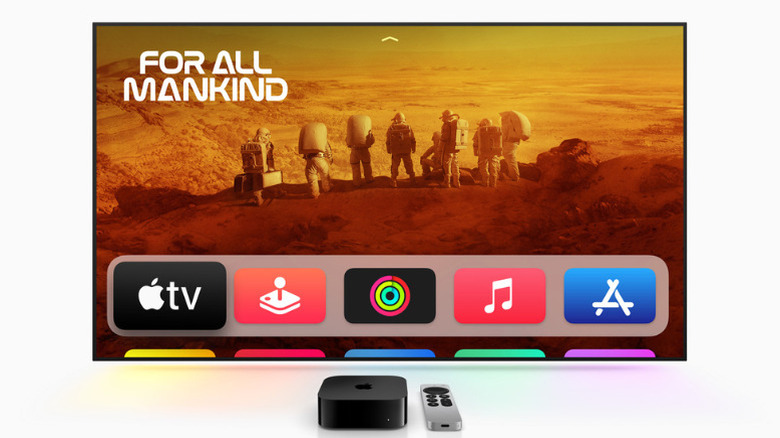We may receive a commission on purchases made from links.
If you don’t have a smart TV by now, you’re either the last holdout amongst your friends or a bona fide television luddite. As of May 2024, nearly 80% of all households in the U.S. had a smart TV.
Smart TVs have revolutionized home entertainment, eliminating the need for external streaming devices and offering a seamless, internet-connected viewing experience. At the heart of every Smart TV lies its operating system (OS): the software that determines what the user interface looks like, not to mention app availability and overall functionality.
With so many options available, choosing the best Smart TV OS can be an overwhelming thing. Some prioritize ease of use, while others boast extensive app libraries or advanced smart home integration. For your sake, we’ve evaluated the top smart TV operating systems on the market today based on their unique features, app support, and overall user experience.
Vizio SmartCast
Despite ranking the lowest on our list, Vizio SmartCast is still mostly functional, but it has limited app availability and a frustrating interface. Unlike other smart TV operating systems that feature a built-in app store, SmartCast relies heavily on casting content from a mobile device or external streaming device. This can be pretty inconvenient for users who want the kind of smart TV experience where they can shop for apps. While SmartCast supports popular streaming platforms like Netflix, Hulu, and Disney+, it falls short in offering the same breadth of apps as competitors.
Vizio SmartCast also unleashes frequent software updates on your TV. While these are theoretically supposed to help your TV function at its best, these updates often introduce more issues than they resolve. On the positive side, SmartCast does support Apple AirPlay and Google Chromecast. This makes it easy to stream content from your mobile devices (including those apps you can’t download to your SmartCast). As a standalone Smart TV OS, it definitely lacks the refinement and versatility of other platforms. You’re better off using an external streaming device instead.
Amazon Fire TV
Amazon Fire TV is another smart TV OS that falls short of its contemporaries. Its biggest problem — which should come as no surprise to Kindle users — is its aggressive advertising and Amazon-centric approach. While Fire TV OS offers a vast selection of streaming apps, including Netflix, Hulu, and Disney+, its interface prioritizes Amazon Prime Video content, sometimes making it difficult to navigate to other services. The platform also features a significant amount of sponsored content, which can make the home screen feel cluttered and overwhelming.
This fealty to Amazon isn’t all bad, though: One of Fire TV’s strengths is its deep integration with Alexa, Amazon’s voice assistant. Users can control their TV, search for content, and even manage smart home devices with voice commands. However, Fire TV’s overall usability ultimately suffers from its over-reliance on advertisements and Amazon services. For users who prefer a clean, intuitive interface, other smart TV OS options will provide a more balanced experience without the constant push toward Amazon products.
Samsung Tizen
Samsung’s Tizen OS isn’t bad. Even though it lands in the bottom half of this ranking, it offers a smooth, fast, and polished interface overall. That said, it does have some limitations in customization and app variety. Tizen is touted by Samsung for its sleek design, quick response time, and user-friendly navigation, and, for the most part, this isn’t wrong. The home screen is easy to navigate, with apps neatly arranged at the bottom, allowing for quick access to whatever content you’re looking for. The OS also supports a wide range of streaming services, including Netflix, Hulu, Disney+, and Apple TV+.
One of Tizen’s standout features is its Samsung Smart Hub, which consolidates a ton of content recommendations from various streaming services into one central location. It also integrates well with Samsung’s ecosystem, including SmartThings for smart home control. However, the OS falls short in app selection compared to Google TV or Roku, and it lacks some advanced features like extensive third-party customization. Another downside is that Samsung’s software updates occasionally phase out older apps, limiting long-term support for some apps. Users who want more extensive app availability or a more open ecosystem should look elsewhere.
Roku TV
With its intuitive interface, vast app selection, and affordable range of devices, Roku TV stands as one of the most user-friendly Smart TV OS platforms around. Known for its simple, grid-style menu (to say nothing of its soothing, side-scrolling screensaver), Roku TV OS makes finding and launching apps a breeze. And, unlike Amazon Fire TV, Roku doesn’t push its own content aggressively — making for a much more neutral streaming experience overall. The Roku Channel also offers a variety of free content, which is a nice bonus.
The biggest strength of Roku TV is its unmatched app availability. It supports virtually every major streaming service, including niche apps that some competitors lack. Roku devices also come with frequent software updates that make for an even smoother and more secure streaming experience. Voice control is available on some TVs using the Roku Voice Remote, which is another nice bonus. Roku’s interface might lack the visual polish and modern design found in competitors like Google TV or Apple TV, but for those who value a reliable, affordable smart TV, Roku TV remains a very strong contender.
LG webOS
LG’s webOS is one of the most polished Smart TV operating systems, giving you an attractive interface, smooth navigation, and generous app support. Its minimalist design features a row of apps along the bottom of the screen, letting you quickly switch between streaming services without interrupting playback. LG’s Magic Remote enhances usability even further, giving you motion controls and a scroll wheel for more intuitive navigation.
Another key advantage of webOS is its wide range of supported apps, including Netflix, Prime Video, Disney+, and Apple TV+. The OS also integrates well with voice assistants like Google Assistant and Alexa, giving you the option for hands-free controls. WebOS supports Dolby Vision and Dolby Atmos, too, making it a great choice for home theater enthusiasts. But, while webOS delivers a fantastic user experience, it’s not as open as Google TV — meaning customization options are somewhat limited compared to the competition. Even so, LG’s webOS still earns its spot in our top three.
Google TV
Google TV is one of the newest smart TV operating systems on the list, but its high ranking isn’t because of recency bias: It builds upon the foundation of Android TV to offer an enhanced user experience with a modern, content-first approach. Unlike traditional Smart TV operating systems that rely on app-based navigation, Google TV prioritizes content recommendations across different streaming services, making it easier to discover new shows and movies. The interface looks fluid and responsive, complete with Google Assistant integration for voice commands.
App support is one of Google TV’s strongest features, including the Google Play Store and the access it provides to thousands of streaming apps, games, and productivity tools. It also seamlessly integrates with Google’s ecosystem, including YouTube, Nest smart home devices, and Chromecast capabilities. Another great feature is its ability to create multiple user profiles, allowing for personalized recommendations for each household member. While Google TV occasionally suffers from minor bugs or performance hiccups (just like any smart TV OS), its overall functionality, customization, and app availability make it one of the best options on the market today.
Apple tvOS
This is going to be divisive, but we’ve given Apple tvOS the top spot for a good reason: From its exceptional performance to its seamless ecosystem integration, tvOS is a premium user experience through and through. Unlike many other smart TV operating systems that prioritize ads or sponsored content, tvOS offers a clean, ad-free viewing experience that just can’t be beat. Navigation is also incredibly smooth, thanks to Apple’s powerful hardware and well-optimized software. Plus, the App Store provides access to a vast selection of streaming services, gaming apps, and even fitness apps through Apple Fitness+.
Another one of the biggest advantages of tvOS is its deep integration with Apple’s ecosystem. With features like AirPlay, HomeKit compatibility, and iCloud syncing… For Apple users, it’s simply second to none. The Apple TV app also consolidates content from multiple streaming platforms, while Siri voice search offers accurate, context-aware recommendations. Even though tvOS is only available exclusively through Apple TV devices, its superior features and app ecosystem make it the best smart TV OS available today.
Source: http://www.slashgear.com/1800524/major-smart-tv-os-ranked-worst-best/
 tvbroadview.com
tvbroadview.com
